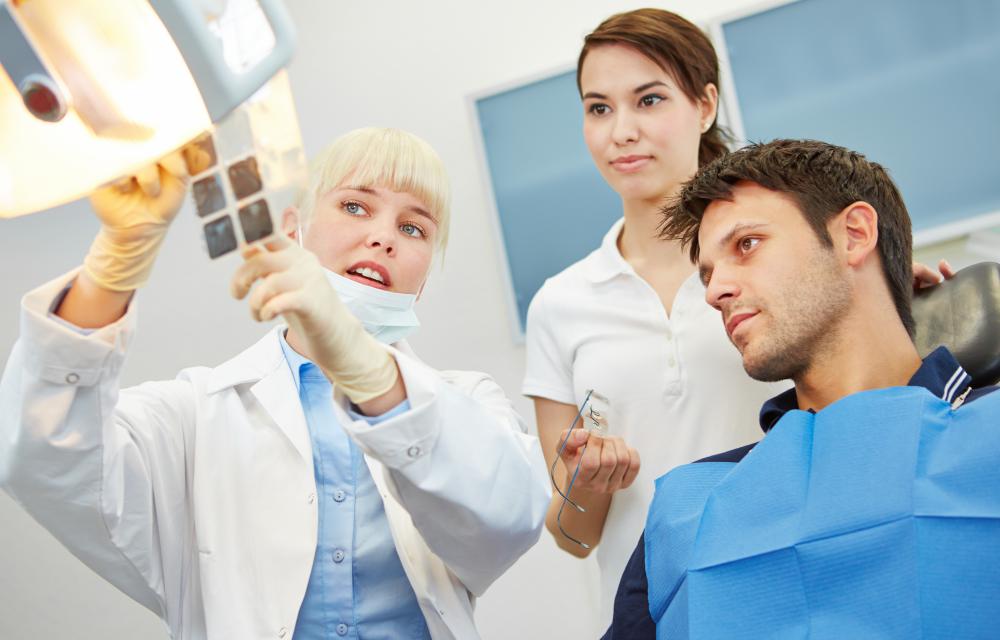At WiseGEEK, we're committed to delivering accurate, trustworthy information. Our expert-authored content is rigorously fact-checked and sourced from credible authorities. Discover how we uphold the highest standards in providing you with reliable knowledge.
What are the Different Ultrasound Courses?
Ultrasound technicians, also called ultrasonographers or sonographers, handle high-frequency sound equipment designed to examine and image various organs and structures within the human body. These trained professionals are a vital part of a healthcare team, providing essential medical information that help physicians diagnose patients’ conditions. A majority of employers prefer to hire ultrasound techs who have completed a formal training program. Students who enroll in ultrasound courses are typically working towards a certificate, associate’s or bachelor’s degree in ultrasound technology.
Ultrasound courses required by a certificate program are designed to train students in various ultrasound techniques and imaging procedures. Some of the typical ultrasound courses offered through these training programs include the principles of sonography, ultrasound physics, sonographic anatomy and ultrasound instrumentation. Instructors also explain the biological effects that ultrasound has on the human body. Some ultrasound courses provide specialized training in cardiac, obstetric, abdominal or gynecologic sonography procedures. After completing these ultrasound courses, graduates have the educational requirements necessary to sit for the American Registry of Diagnostic Medical Sonographers (ARDMS).

An ultrasound training program awarding an associate’s degree typically includes ultrasound courses, labs and clinical experiences that combine to provide students with the skills and knowledge necessary to obtain, interpret and analyze pathological and anatomical data using ultrasound technology. Typical course topics include ultrasound scanning techniques, interpreting ultrasound data, acoustics physics and pathophysiology. Graduates of these two-year ultrasound degree programs are eligible to sit for the ARDMS certification exam, and typically find entry-level employment as ultrasound technicians.

Ultrasound courses required by a bachelor’s degree plan generally include health care systems, microbiology and organic chemistry as well as hands-on training in various ultrasound techniques and instrumentation. Most of these programs allow students to specialize in abdominal, gynecology, obstetric, breast or cardiac sonography.
Some of these bachelor’s degree programs allow students to specialize in dental or veterinary ultrasound studies. Students who would like to work as ultrasound technicians at veterinary clinics will be required to attend classes that focus on nutrition for animals, the anatomy and physiology of animals and animal parasitology. Those who would like to work as sonographers in a dental office need to also enroll in classes on dental anatomy, tooth morphology and oral pathology.

Whatever the area of specialization, students must finish internship training at an imaging center to gain real-world experience in performing ultrasound procedures on patients. After the successful completion of the ultrasound courses and internship, graduates are eligible to sit for the ARDMS exams. They will also be allowed to take the exams needed to become a registered diagnostic cardiac sonographer (RDCS) or a registered vascular technologist (RVT).

The job outlook for those with formal training in ultrasound technologies should remain favorable. Populations are aging, and the need for diagnostic testing continues to rise. Graduates of ultrasound college programs typically find employment in hospitals, physicians’ offices, diagnostic lab facilities, veterinary clinics or dental clinics.
AS FEATURED ON:
AS FEATURED ON:














Discuss this Article
Post your comments